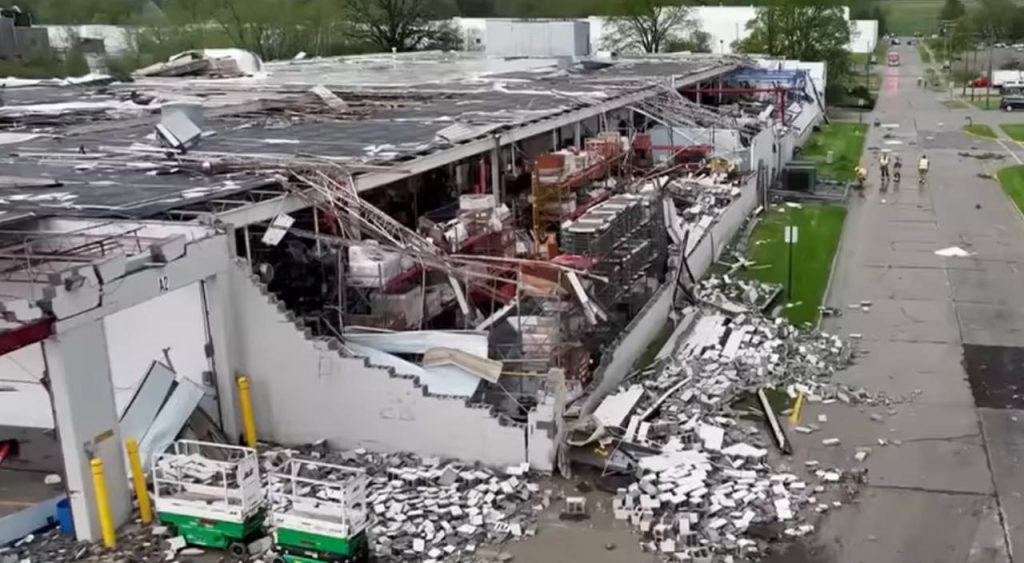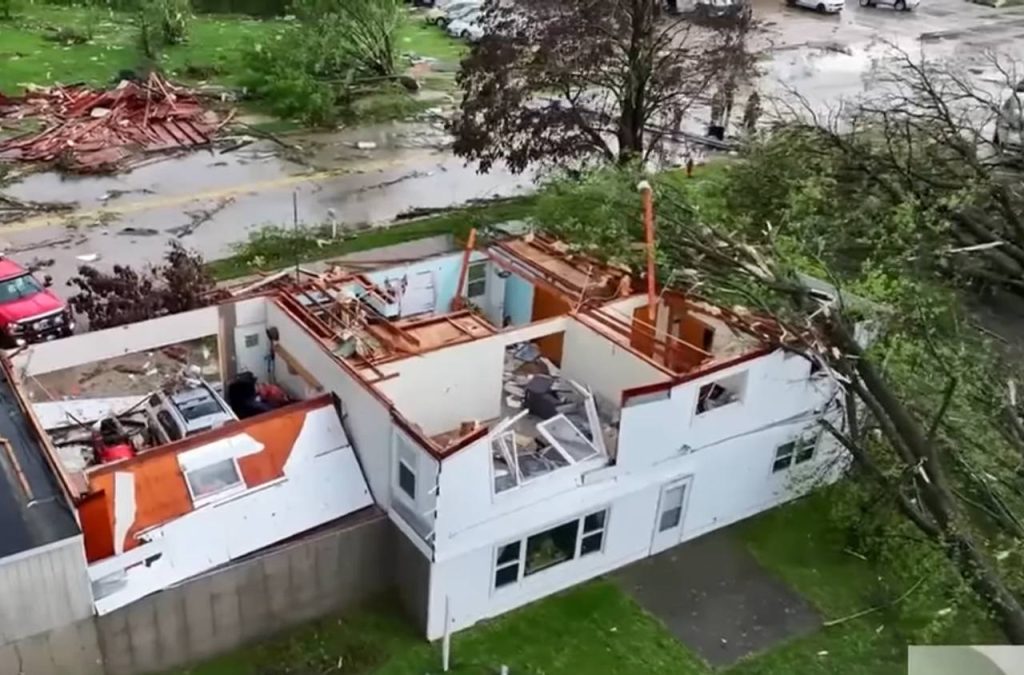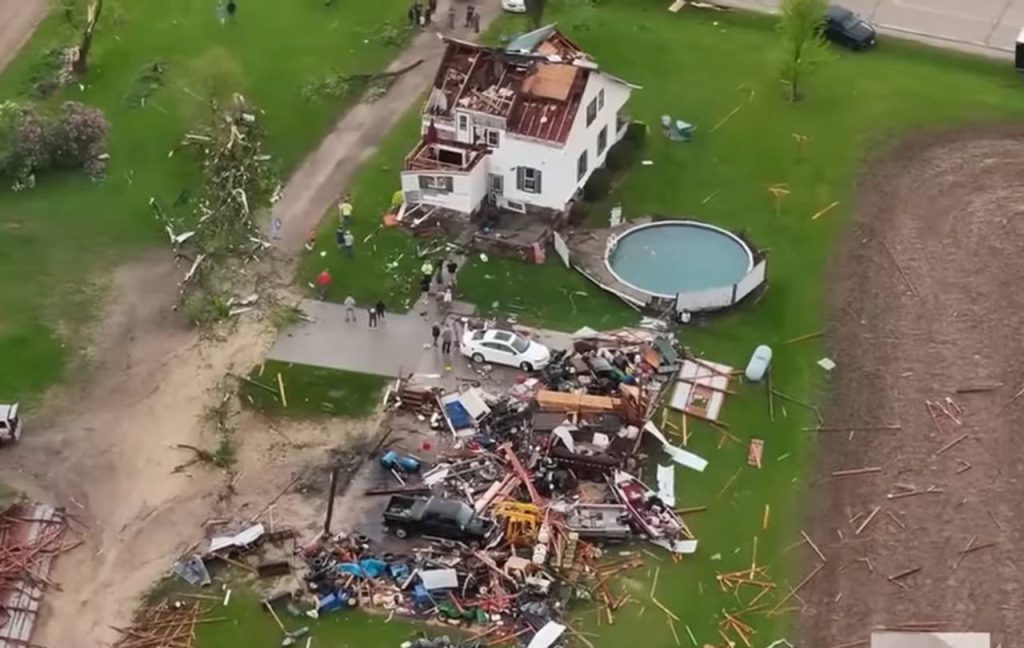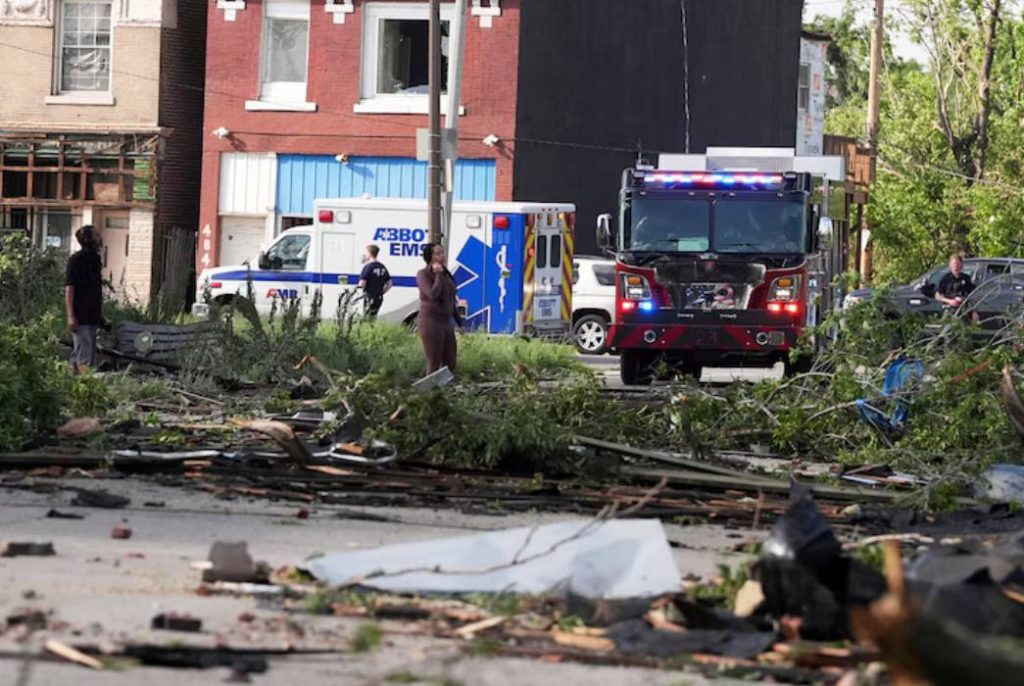An unprecedented and deadly outbreak of severe weather has ravaged the central and eastern regions of the United States, resulting in the tragic loss of at least 23 lives and leaving more than 600,000 residents without electricity. The wide-reaching storm system began wreaking havoc on Friday and has continued its destructive path into Saturday morning, affecting communities from the Heartland to the East Coast.

Widespread Fatalities Across Multiple States
State authorities have confirmed the deaths of at least 23 individuals across three states. Kentucky has borne the brunt of the fatalities with 14 reported deaths. Missouri followed with seven confirmed fatalities, while Virginia has reported two storm-related deaths. Emergency crews continue search and recovery efforts, and officials caution that the death toll may rise as assessments continue.
Power Outages Stretch Across the Midwest and South
Severe storms have knocked out power across a broad swath of the country, stretching from Michigan to Tennessee. More than 600,000 utility customers are currently without electricity, as powerful winds, falling trees, and hail have disrupted power lines and infrastructure. Restoration efforts are ongoing, but authorities warn that full service restoration may take days in some of the hardest-hit areas.

Tornadoes, Hail, and Damaging Winds Reported Across 15 States
According to the latest meteorological data, at least 26 tornadoes were reported on Friday alone. These tornadoes touched down across multiple states, including Kentucky, Indiana, Missouri, Illinois, and New Jersey. The storms also brought massive hailstones, with softball-sized hail reported in Barlow, Kentucky, and near Sullivan, Indiana. Additional reports include hail larger than tennis balls from Texas through Ohio.
Fifteen states have documented severe storm damage, including structural destruction from tornadoes, widespread wind damage, and significant hail impacts. The affected zone extends from Missouri to Michigan and eastward to New Jersey, with the severe weather corridor continuing to advance through the East-Central United States.

Current Watches and Ongoing Storm Activity
As of Saturday morning, remnants of the destructive weather system continue to pose significant threats. A Severe Thunderstorm Watch remains in effect for parts of southeastern Arkansas, north-central Alabama, and central Mississippi until 10:00 a.m. Central Time. An additional Severe Thunderstorm Watch is active until 12:00 p.m. Eastern Time for regions of northern South Carolina, west-central North Carolina, and southern Virginia.
These storms have already caused substantial damage, with quarter-sized hail, widespread tree damage, and reports of roof collapses. The storms are expected to persist into the late morning hours, potentially increasing the risk of additional power outages and injuries.

Regional Forecasts and Ongoing Risk Areas
- Northeast U.S.: The highest risk for Saturday is focused on portions of upstate New York, western Massachusetts, most of Vermont, and western New Hampshire. Cities including Burlington, VT; Springfield, MA; and Albany, NY are within the most significant threat zones. Residents should be prepared for damaging wind gusts, large hail, and the possibility of isolated tornadoes.
- South-Central Plains: The most serious risk continues over central Texas, particularly in the Dallas–Fort Worth metroplex, including Arlington. A broader but slightly reduced threat remains over a wide area including Louisiana, Arkansas, Oklahoma, and Kansas. Urban centers such as Oklahoma City, Little Rock, and Wichita are advised to remain on high alert.
Ongoing Emergency Response and Public Safety Advisories
Emergency management agencies are coordinating search, rescue, and recovery efforts across multiple states. Residents in impacted regions are strongly urged to stay informed through local news sources, weather alerts, and official emergency channels. Those living in mobile homes or vulnerable structures are advised to seek shelter immediately if storms are approaching.